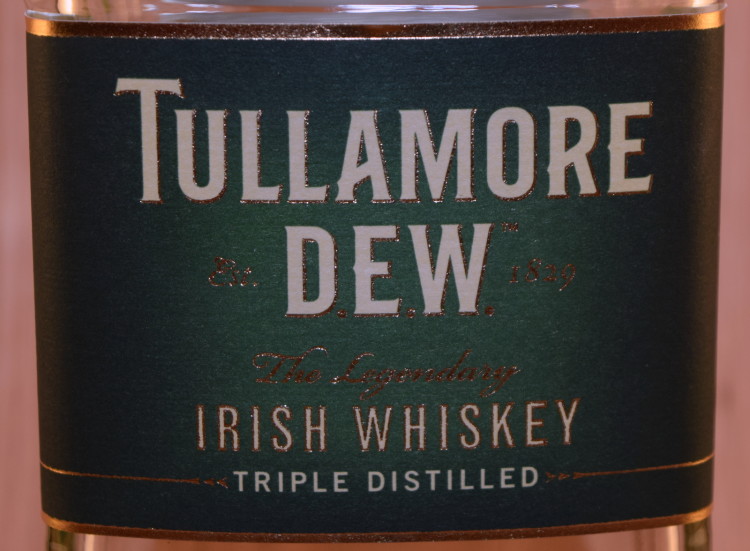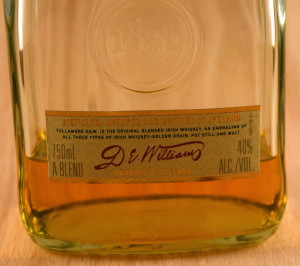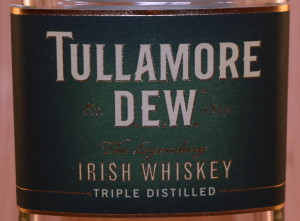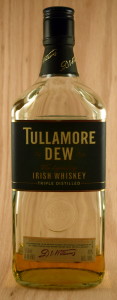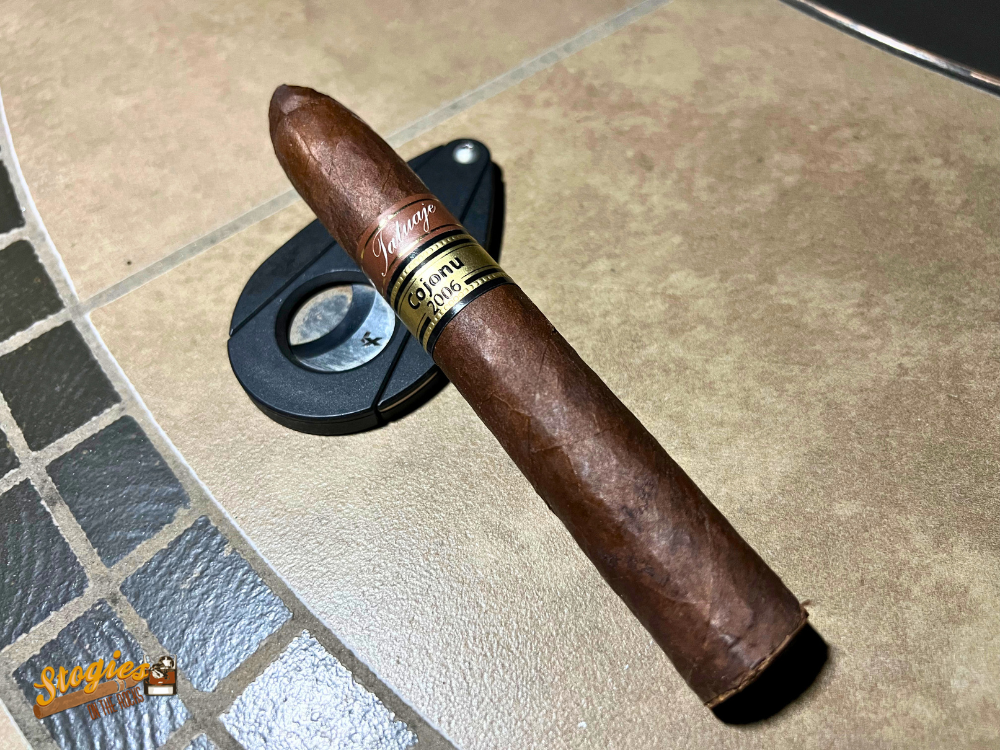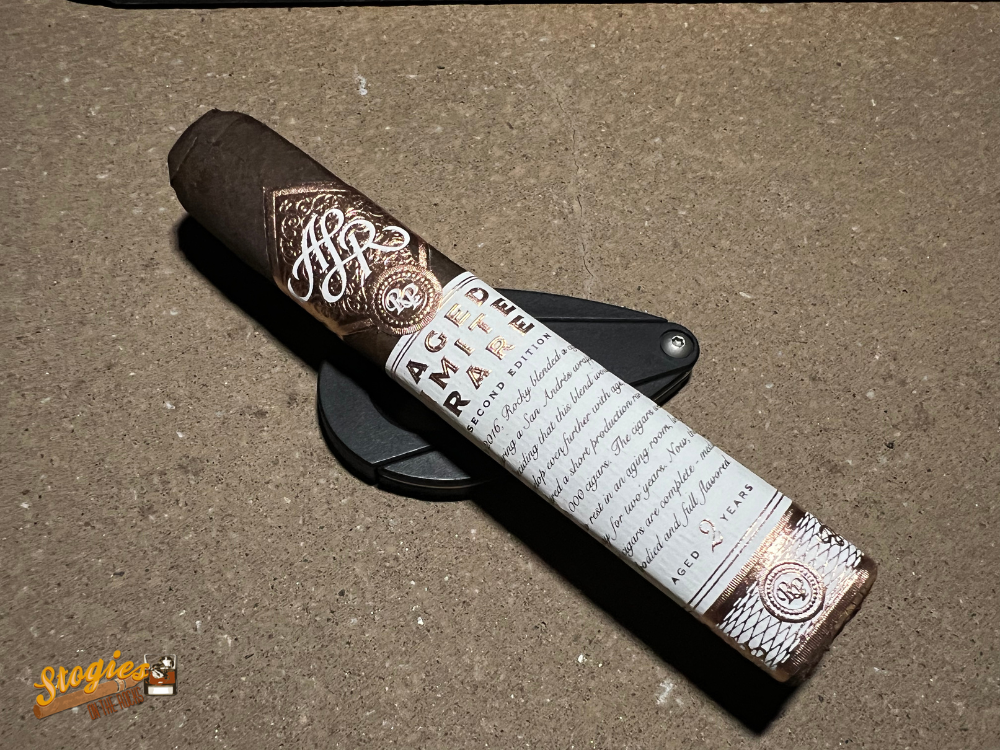Initial Thoughts:
There are not many holidays, if any, that give people an excuse to have a beverage or two, or three, or ten. I for one don’t mind partaking in a little St. Patrick’s Day celebration and I’m sure everyone reading this will do the same! For those that are ready to put the tradition of downing green-dyed Irish stouts behind them, a good Irish Whiskey is the next logical step. Just a few days before St. Patrick’s Day, I was glad to discover that Whiskey Santa sent me some Tullamore Dew Irish Whiskey to get me in the festive spirit!
Before I get into the heart of the review, I must give a full disclosure that I’m of Irish heritage and therefore a bit biased towards Irish whiskey. Sometimes hardcore bourbon or single malt scotch enthusiasts can overlook the subtler tasting experience of Irish Whiskey. It can be overlooked if you don’t give it a chance, but approach Irish Whiskey knowing that it will be a little different than bourbon or scotch and chances are you will enjoy the experience!
History:
Since I’ve already given some history on St. Patrick’s Day the last time I reviewed an Irish whiskey, I won’t go into too much St. Patrick’s Day history. As we all know, drinking and St. Paddy’s Day goes hand-in-hand. Many believe this started because of when the holiday falls on the calendar. Observers of Lent give up certain things (often vices) during roughly a six week period before Easter. There are many people that give up booze during this time but on St. Patrick’s Day Lenten restrictions are often lifted. Thus, many would get in their drinking while they could! For more information on the connection between St. Patrick’s Day and drinking, check out the Bushmills 10 Year Review.
Tullamore was first distilled by Michael Molloy back in 1829. It wasn’t until the 1890’s that the whiskey became known as Tullamore D. E. W. which was to honor the distillery’s general manager Daniel E. Williams. He took Tullamore distilling into the modern era, bringing electricity, the telephone, and motorized transportation to the entire town of Tullamore. Production continued in Tullamore until 1953 when the company was sold to Powers and the distillery in Tullamore closed. Starting in 1953, Tullamore D.E.W. was produced at the New Midleton Distillery. Most of the product that is contained in the bottle today is from this same distillery. However, in September of 2014 the company opened their own distillery back in Tullamore. This was possible after the company was sold to William Grant & Sons in 2010 and announced they would invest in the new distillery.
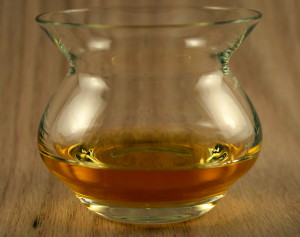
Nose:
First off, I have to mention that this is the first review that I will have the pleasure of doing a blind tasting with a NEAT tasting glass. I’m mentioning it in the nose section because this is where you can tell the biggest difference, enhancing the aroma while dissipating the alcohol aroma away from where you will be nosing the glass! It also doesn’t hurt that it looks like a little pot of gold! Right off the bat, green apple was very prominent with a little honey sweetness. There were also faint notes of vanilla and citrus. Overall a very bright and pleasant nose that makes me want to dive right in!
Taste:
Before I get into the taste, I want to go over how this whiskey is made. Tullamore D.E.W. is a blended Irish Whiskey. Whiskeys that are made with three different processes, are then blended together. First, there is a single malt whiskey that is triple-distilled. Next, there is a traditional pot-still whiskey that is distilled from both malted and un-malted barley. This is also triple-distilled. Finally, there is a single grain whiskey that is distilled from corn. This spirit isn’t triple distilled like the others, but rather continuously distilled in a column still. All of these spirits have distinctively different flavor profiles. They are aged for roughly 4-7 years in a variety of barrels from bourbon to sherry casks. They are then blended together to produce the liquid gold that you’ll find in the bottle!
All of that means that while initially this whiskey may seem straightforward, the understated complexity starts to come through. Just like the nose, initially you are hit with green apple on the palate. There is also some vanilla and citrus that gives way to some spice in the middle of your palate. I also get some faint toffee and nutty flavors which remind me of brittle. The finish has some vanilla and wood notes in the finish with some lingering spice that lasts fairly long.
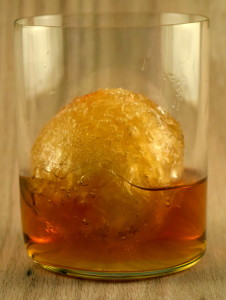
The Leprechaun’s Wrecking Ball Cocktail:
For this cocktail, Isaac and I agreed we needed to take it up a notch for Saint Patrick’s Day. I saw some Irish Whiskey cocktails that used hard cider and Isaac and I got the idea to try to create an ice ball out of cider using a Tovolo Ice Sphere! When I was picking up supplies, I picked up some Woodchuck Oak Aged Hard Cider and saw some Lambic as I was walking to the checkout line and thought I’d try it. I wasn’t sure how it was going to turn out but thankfully it turned out to be delicious!
Ingredients:
- 3 oz. Tullamore D.E.W.
- Lindeman’s Pomme (apple) Lambic or Woodchuck Hard Cider (enough to make large ice ball)
- Lime
- Peychaud’s bitters
Directions:
First you will need to prepare the ice ball about 6 hours in advance by pouring the Lambic or Hard Cider to the ice ball mold. Drop some lime zest into the mold if you feel like a little extra in the ice. When you are ready to make your cocktail, add the Tullamore D.E.W. to a mixing glass. Next, add a few drops of lime juice and two dashes of Peychaud’s bitters. Add ice and stir. Finally, put your ice ball in a DOF glass of your choosing (We chose the Riedel H2O DOF) and strain the other ingredients over the ice ball. Garnish with a lime zest and enjoy! The neat thing about this cocktail is that the more the ice ball melts, the more you will pick up the tartness of the Lambic or Hard Cider.
Overall:
I’ve always enjoyed a good Irish whiskey and Tullamore D.E.W. is just that! And what better time to pour yourself some Irish whiskey than on St. Patrick’s Day? When you take into account the great price of this whiskey, it can easily become your Irish Whiskey of choice. For those that enjoy more robust bourbons or big peaty scotch, this may not be as robust as you usually like. But if you give this whiskey a chance and approach it with an open mind, you may just enjoy it!

